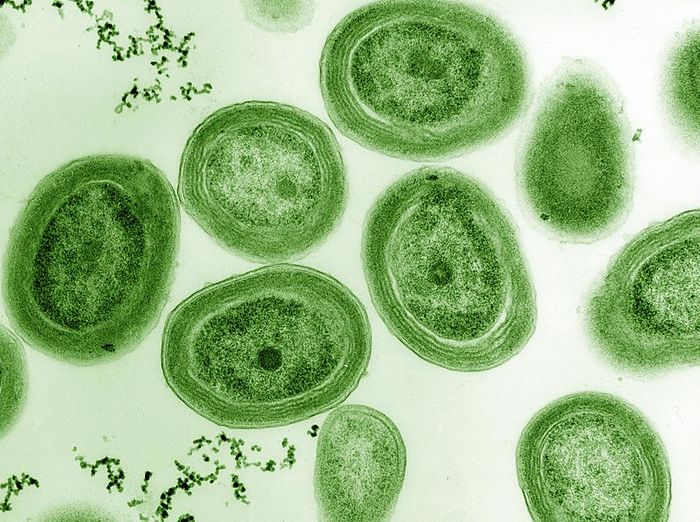There are many microbes that perform essential functions that we don’t even have to think about. For example, the ocean is full of Prochlorococcus bacteria, which generate huge amounts of the oxygen in the seas, from the poles to the tropics. They are thought to be the most abundant photosynthetic organisms in the world. Now scientists have learned more about how these microbes are able to survive in so many places. Prochlorococcus bacterial cells can exchange genetic information with one another, which is no surprise; but they can do so in a way that has never been observed before. Huge segments of DNA with blocks of genes can be transmitted from one Prochlorococcus cell to another, enabling them to take on new abilities such as metabolic reactions or viral defense strategies even when few of the microbes are present in one location.
Scientists have now described this new process of horizontal gene transfer, in which one organism passes genetic material directly to another in a way that does not involve inheritance. The findings have been reported in Cell.
Sequences of DNA that contain several genes and their surrounding sequences that get transferred through this method have been called tycheposons. They can separate from their original location spontaneously and then migrate to another organism, probably through cellular sacs known as vesicles, which bud from cell membranes.
“We’re very excited about it because it’s a new horizontal gene transfer agent for bacteria, and it explains a lot of the patterns that we see in Prochlorococcus in the wild, the incredible diversity,” said Professor Sallie “Penny” Chisholm of MIT, who aided in the discovery of Prochlorococcus in 1988 and is featured in the video below.
This work started with an analysis of genetic sequences from hundreds of different Prochlorococcus species. The researchers wanted to know how they quickly gained or lost functions, while they did not display any of the known mechanisms of horizontal gene transfer, or features of mobile genetic elements. The researchers found genetic regions or islands that were hotspots of variation, which often contained genes that conferred abilities to deal with certain nutrients.
These islands often varied significantly between Prochlorococcus species, but they kept appearing in the same part of the Prochlorococcus genome, and sometimes they were almost the same, even in very different species; this was all evidence of that some kind of horizontal transfer was occurring.
The scientists have discovered something that was like a genetic LEGO set, according to MIT postdoctoral researcher Thomas Hackl. The microbes could use this system to quickly adapt to their environment, such as by acquiring a gene that improved their ability to absorb an important nutrient that was scarce. The researchers were even able to collect some of these vesicles and capsids from the open ocean, and they were “actually quite enriched” with tycheposons.
The team discovered that there are several mechanisms that Prochlorococcus uses to transport genes. They might use membrane vesicles as little sacs containing tycheposons, or they may hijack a viral infection that can then move the tycheposons along with the virus. These modes of transport are especially valuable in the open ocean, where cell to cell contact is very challenging, noted Hackl.
This phenomenon may also occur in other marine bacteria, suggested Hackl. The researchers have already found genetic elements in other bacteria that are similar to those found in Prochlorococcus.


Leave a comment